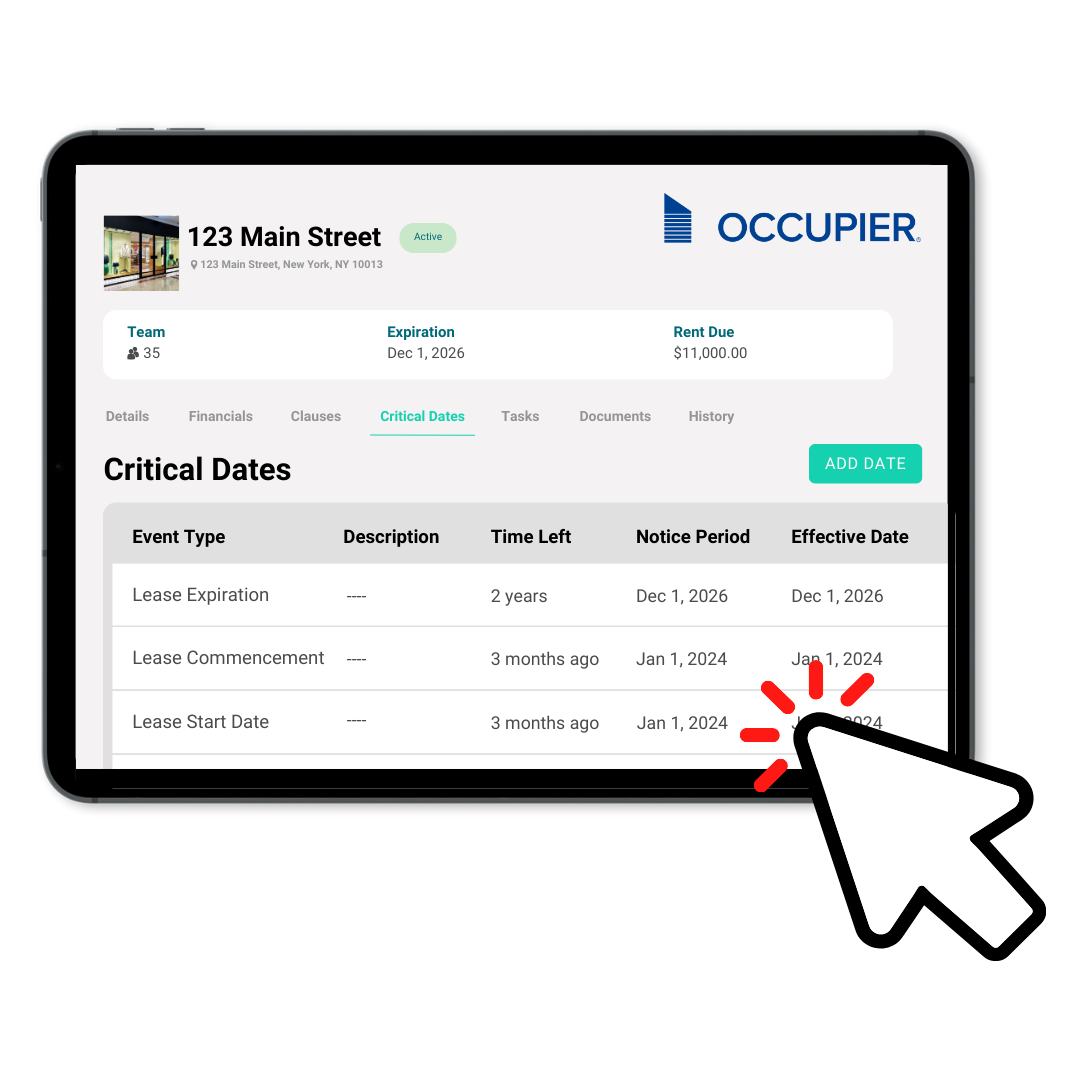Ultimate Guide to Lease Negotiations: Strategy, Tactics & Tips
Last Updated on July 28, 2025 by
Leasing commercial space is a major financial commitment, and negotiating lease terms is a critical part of the commercial leasing process. Whether you’re a business owner seeking the perfect space, a CPA advising clients, or part of a real estate team managing site selection, understanding how to navigate complex lease terms can mean the difference between long-term success and costly mistakes.
In this comprehensive guide to lease negotiations, you’ll gain expert insights and a practical lease negotiation checklist to support informed decisions throughout the leasing process. From reviewing lease clauses to crafting a strategic approach at the negotiating table, this guide empowers commercial tenants to secure a well-negotiated lease aligned with their space requirements, financial goals, and operational needs.
Understanding the Lease Agreement
Before stepping into negotiations, tenants must conduct thorough due diligence and develop a keen understanding of the lease agreement. A commercial lease attorney or real estate attorney can help you identify key lease clauses and legal obligations. Below are the essential elements every prospective tenant should review:
Lease Duration and Renewal Options
Know your lease length, and negotiate lease options that provide flexibility—whether you prefer short-term leases or longer lease terms with renewal rights.
Rent Structure and Escalation Clauses
Understand whether you’re agreeing to fixed rent, base rent plus percentage leases, or rent with annual increases. Clear terms around lease rates, rent-free periods, and free rent incentives are critical to budgeting.
Operating Expenses and CAM Charges
Full-service and net leases—including triple net leases and modified gross leases—define how tenants share costs like janitorial services, property taxes, or parking space maintenance. These hidden costs can impact financial management if not carefully reviewed.
Use and Zoning Restrictions
Verify that the leased property aligns with your business model and that use is compliant with local area zoning regulations. This is especially important for retail stores and office space.
Maintenance Responsibilities
Lease agreements must clearly define maintenance responsibilities between the property owner and the tenant. Misunderstandings here can lead to unexpected costs and future disputes.
Insurance and Indemnification
Insurance coverage and indemnity clauses should be reviewed with a lease attorney. Be sure liability and property insurance obligations are clearly defined.
Assignment and Subletting
Clauses regarding the landlord’s consent for subletting or assigning the lease to a new tenant can affect business flexibility during growth or downsizing.
Termination Clauses and Exit Strategies
A well-negotiated lease includes exit terms that protect the tenant’s best interests under various business circumstances.
Understanding these key terms and conducting a thorough review of the original lease with your legal expert prepares you for a successful negotiation. By familiarizing yourself with these lease agreement elements, you will be better equipped to negotiate favorable terms that align with your business goals.
Preparing for Lease Negotiations
Successful lease negotiations require careful preparation. In this section, we will discuss the essential steps to take before entering into negotiations, including:
Define Specific Needs
Start by identifying your space size, preferred location, layout, and infrastructure needs. This clarity helps you find the right commercial property in your desired area.
Conduct Thorough Market Research
Research local market rents, vacancy rates, and the going landlord’s asking rent. Understanding local market conditions and landlord expectations informs stronger offers.
Organize Financials
Your lease rates and rent payments must align with your financial transactions and projections. Provide documentation that demonstrates your ability to meet rent obligations—this builds credibility with the property manager or commercial real estate broker.
Establish a Strategic Approach
Create a list of deal-breakers, must-haves, and areas where you’re flexible. Use your lease negotiation checklist to develop scenarios that allow for strategic concessions while safeguarding your core needs.
Engage a Commercial Real Estate Broker or Legal Expert
An experienced commercial real estate broker or lease attorney can help navigate complex lease terms, advocate for your position, and avoid hidden fees.
Build Relationships
Establishing effective communication with the landlord or property manager sets a positive tone for negotiations. It also fosters transparency around lease clauses and business needs.
A well-prepared tenant is better equipped to handle the nuances of the commercial leasing process and finalize a deal that supports long-term success.
Commercial Lease Proposal
A strong lease proposal is a critical element of any successful negotiation. It serves as the first formal document where you outline your desired terms and conditions to the landlord, setting the stage for a smoother negotiation process. Here’s how to craft an effective commercial lease proposal:
- Clear Objectives: Define your key terms—such as lease duration, rent, and required concessions—at the outset. This helps prevent confusion and ensures you’re both on the same page from the beginning.
- Market Data: Support your proposal with comparable market data, including rental rates for similar properties in the area. This strengthens your position and shows that your proposal is based on solid market information.
- Tenant Improvements & Build-Outs: Include any tenant improvement or build-out requirements within your proposal. Clearly outline what is needed and why, to ensure both parties understand the scope and costs involved.
- Flexibility & Concessions: While you want to secure favorable terms, it’s also important to highlight areas where you’re open to compromise. For example, you may ask for rent-free periods or higher tenant improvement allowances in exchange for a longer lease term.
- Next Steps: Clearly define the next steps in the negotiation process. This includes setting up a meeting to discuss the terms, timelines for responding, and any additional information needed. This shows you’re serious and proactive.
Lease Proposal Template
We know that drafting a lease proposal from scratch can be both time-consuming and overwhelming. That’s why we’ve created a comprehensive template to simplify the process and ensure you include all the crucial details. With our template, you’ll have a solid foundation to kick off negotiations with the landlord.
Our template covers key terms such as base rent, rent-free periods, lease duration, maintenance responsibilities, tenant improvement allowances, and essential lease clauses—making sure you address every important aspect needed to craft a successful proposal.
Negotiation Strategies and Tactics
At the negotiating table, a strategic approach combined with market insights will help you advocate effectively:
Use Anchoring Techniques
Start discussions with strong data—like market research or a competing lease offer—to set expectations. Referencing the market rent or vacancy rates in the local area can help anchor your offer.
Create Win-Win Scenarios
The best lease negotiations aim for mutual benefit. For example, a longer lease term might justify lower rent or additional tenant improvement allowances.
Leverage Competitive Offers
Let the landlord know you’re considering other properties. This adds pressure and strengthens your position, especially when you’ve identified a preferred location.
Stay Flexible and Creative
Propose alternative structures like gross leases instead of net leases or negotiate modified gross leases that work better with your business model.
Understand the Landlord’s Perspective
Align your strategy with the property owner’s financial goals. For instance, a landlord may value stability over short-term gains—use that insight to negotiate lower rent in exchange for lease.
Request Lease Incentives
Common incentives include rent-free periods, parking space discounts, or build-out allowances. These can significantly reduce upfront costs.
Maintain Professional Rapport
Respectful, effective communication builds trust and keeps negotiations moving forward—even when disputes arise.
Every negotiation is unique. A strategic, informed, and flexible mindset increases your chances of securing a lease type that meets current needs and allows room for growth.
Handling Counteroffers & Negotiation Impasses
Lease negotiations often involve back-and-forth offers. Here’s how to manage them:
- Analyze Counteroffers Thoroughly: Evaluate the financial implications of every change. Ask your legal expert to flag potential risks like ambiguous lease clauses or unexpected costs.
- Submit a Letter of Intent: A non-binding letter of intent (LOI) can outline your position and clarify key terms—like base rent, lease options, or security deposits—before finalizing a binding lease.
- Know Where to Compromise: If the landlord won’t budge on annual increases, consider asking for concessions elsewhere—like a shorter term or additional office space.
- Explore Alternative Solutions: Propose creative solutions such as staggered rent payments or a percentage lease tied to gross sales.
- Involve a Lease Attorney or Mediator: Complex financial transactions sometimes require third-party expertise. Lease attorneys can help resolve conflicts while protecting your tenant rights.
- Know When to Walk Away: If the lease no longer aligns with your business objectives or presents unacceptable risk, it’s okay to move on. There is no shortage of real estate locations, and walking away is often part of the leasing process.
Finalizing the Lease Agreement
Once negotiations wrap up, finalizing the lease is your last opportunity to protect your business before signing a legally binding contract. Every term should be reviewed carefully—ideally with a commercial lease attorney who can help you interpret legal language and catch potential red flags. Focus on clarifying vague provisions, confirming that agreed-upon incentives are documented, and ensuring the lease aligns with local regulations and zoning laws.
Pay close attention to financial details like rent schedules, escalation clauses, and security deposit requirements. Renewal options should be clearly spelled out, including timelines and whether market rents or fixed increases apply. Make sure any promises related to the build-out, parking spaces, or access to shared amenities are captured in writing. Before signing, double-check that your obligations around insurance, maintenance, and landlord notifications are realistic and clearly defined. A thorough legal and operational review can save you from unexpected costs and future disputes.
Post-Negotiation Lease Management
Signing a commercial lease is a milestone—but managing that lease effectively over time is what protects your investment and keeps your operations running smoothly. From tracking key dates like rent escalations and renewal windows to handling maintenance responsibilities and financial planning, ongoing lease management plays a crucial role in long-term success.
Establishing a system to monitor obligations, documents, and landlord communication ensures your team stays proactive rather than reactive. Whether you’re overseeing one location or a portfolio of leases, keeping everything organized, accessible, and audit-ready minimizes risk and supports smarter business decisions.
If you’re looking to streamline lease administration and stay ahead of critical lease milestones, lease management software like Occupier can help. Designed for commercial tenants, Occupier centralizes lease data, automates reminders, and empowers real estate, finance, and operations teams to collaborate with confidence—so you never miss a date, a detail, or an opportunity.

Product Tour
Take a self-guided tour and see how the fastest-growing commercial tenants leverage Occupier for lease management & lease accounting.

